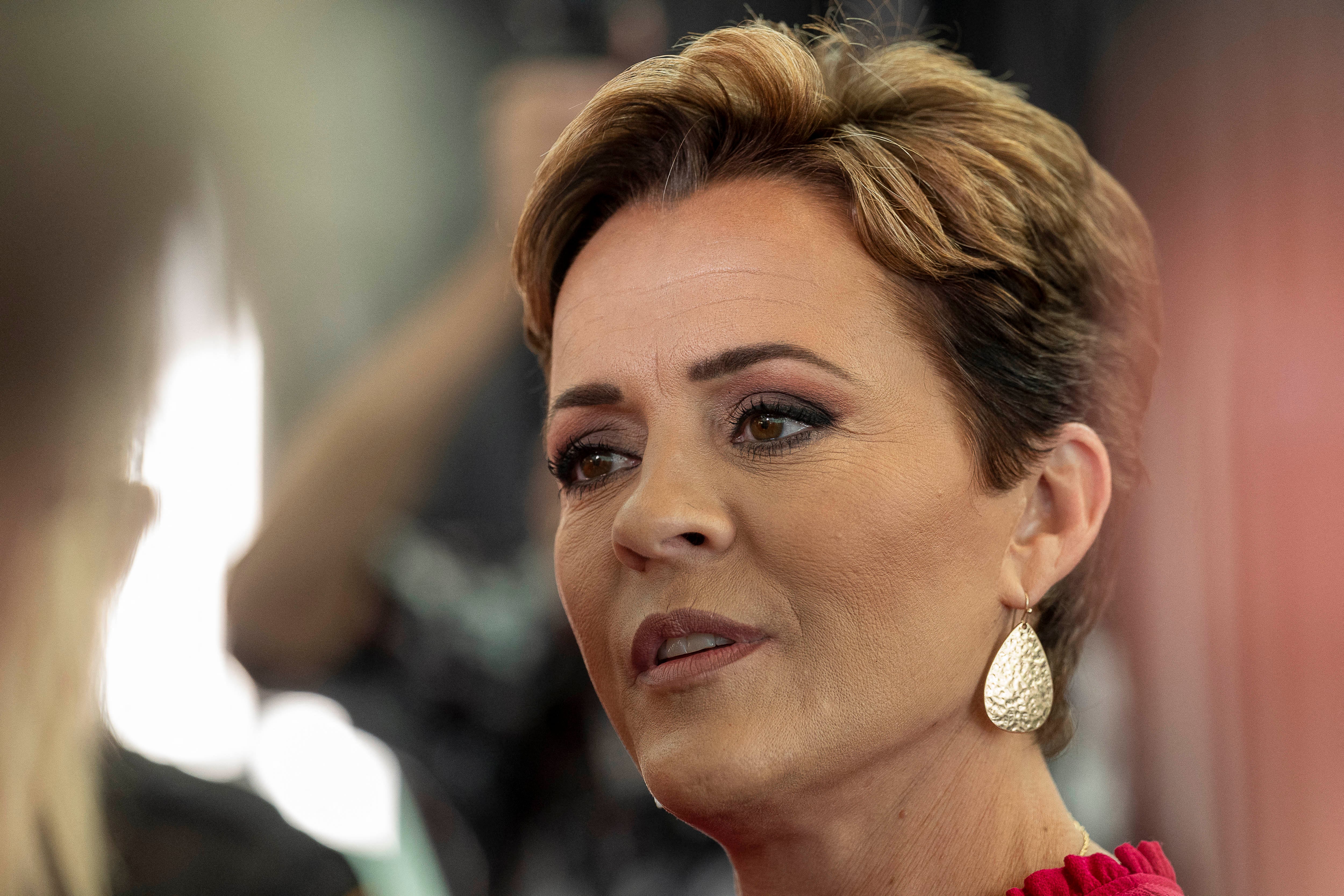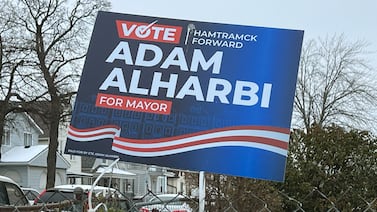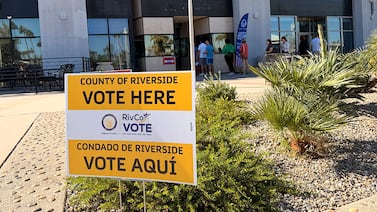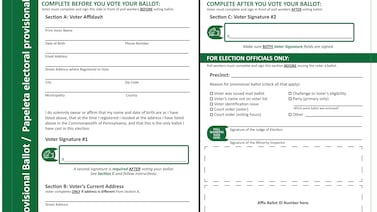In court Thursday, Arizona gubernatorial candidate Kari Lake’s legal team seized on a new explanation for some of the Election Day problems in Maricopa County, arguing it shows malicious intent that ultimately changed the election outcome.
While it’s true that Maricopa County election officials for the first time said some ballot images were incorrectly printed at a too-small size on the page, they emphasized that the mistake was unintentional and those votes were counted.
This problem affected fewer ballots than more widespread printer problems that caused some ballots to fail to print darkly enough. Those ballots were also rejected at vote centers and counted later.
For the GOP candidate’s legal challenge to succeed, her legal team must prove to Superior Court Judge Peter Thompson that the county’s Election Day mistakes were intentional and cost her the election, a high bar. The margin between Lake and her Democratic competitor, current Secretary of State Katie Hobbs, is about 17,000 votes.
The trial ended Thursday and Thompson is expected to rule soon, just a few weeks before Hobbs is set to be sworn in.
Meanwhile, Mohave County Superior Court Judge Lee Jantzen Friday dismissed an election contest brought by Republican attorney general candidate Abe Hamadeh. Democrat Kris Mayes will be sworn into that position, pending results of the recount of the race that are expected Thursday.
Conflicting statements on where incorrectly sized ballots were printed
Maricopa County Elections Director Scott Jarrett and county technical witness Ryan Macias testified that the ballot sizing mistake was not intentional. And since Jarrett said all of the ballots printed at the wrong size were eventually counted, it appears Lake did not lose any votes on those ballots and they shouldn’t have affected the outcome.
Lake’s team argued that the ballot sizing problem was so widespread that it suppressed Republican turnout, costing her the race.
“We proved without a shadow of a doubt that there was malicious intent that caused disruption so great it changed the outcome of the election,” Lake told reporters after the trial. In addition to pointing to the wrongly sized ballot images, her campaign is also arguing that the county did not follow state law governing the acceptance and tracking of ballots.
Conflicting testimony during the trial makes it difficult to determine how many wrongly sized ballot images were printed, and the number of voting sites where they occurred. But there is some evidence that the problem was less widespread than Lake’s team claims – and not the main problem voters experienced on Election Day.
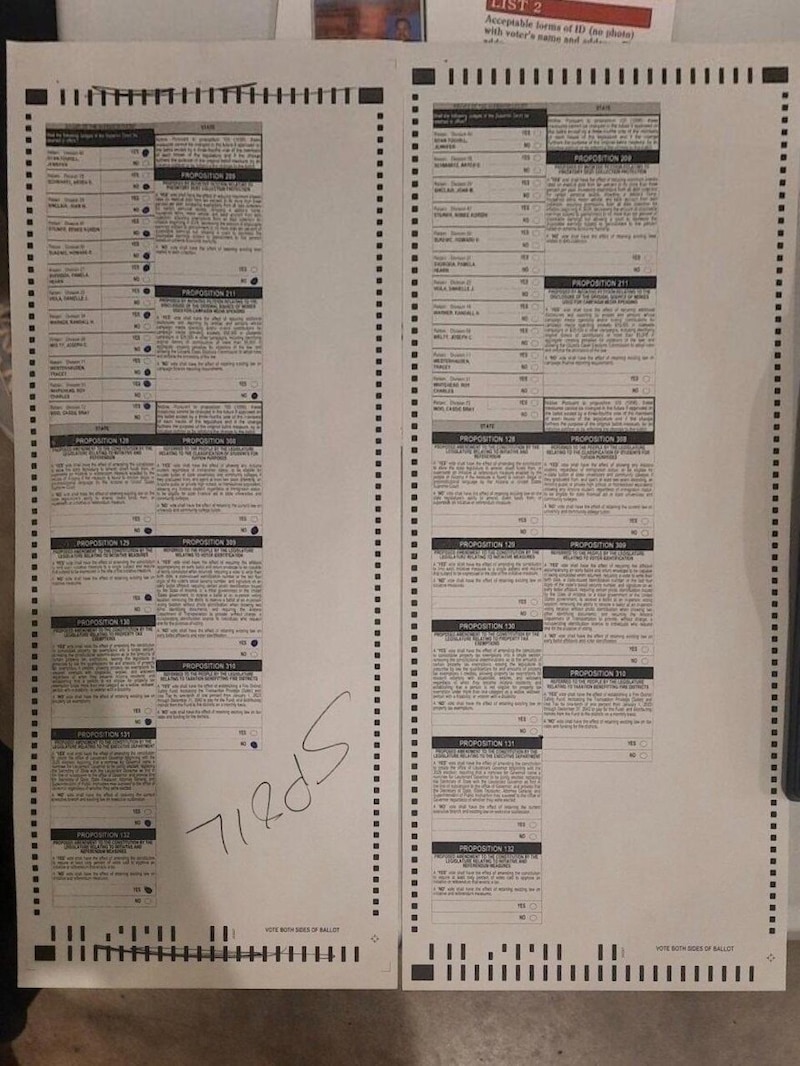
County officials have said that while the tabulation machines could not scan the wrongly sized ballots, those votes were nonetheless tallied and cast using a process the county calls “duplication.” That’s when a bipartisan team replicates the voter’s choices onto a blank ballot. The new ballot is then tabulated in the place of the original defective one.
Ultimately, only 2,656 of the 16,724 ballots that couldn’t be scanned at vote centers on Election Day had to be duplicated in order to be tallied, according to county data. The rest of the ballots rejected by tabulators at vote centers were later able to be scanned by more sensitive machines in use at the county’s central elections center.
What does the county’s election director say happened on Election Day?
The shrunken ballot images first appeared on Election Day, not during early voting, according to Jarrett.
When the tabulation machines started having problems tabulating ballots shortly after the county’s 223 vote centers opened that day, he said, county technicians started to troubleshoot at their assigned locations to figure out the problem.
As they troubleshot, Jarrett said, he believes at least one technician selected a setting that shrinks the image down to fit onto the paper. That made the ballot print smaller on the page than it was supposed to, in turn causing the sensitive ballot tabulators to reject those ballots. County officials didn’t direct the technician, or technicians, to make that change, Jarrett testified.
Jarrett said that this problem has come up during past elections, specifically in the 2020 primary and general election and the 2022 primary.
It’s the first time that county officials have publicly offered this explanation for Election Day problems, even though Jarrett said county officials discovered the wrongly sized ballot images a few days after the election. The county didn’t mention this image size problem in a Nov. 27 report it sent to the attorney general’s office in response to a request to explain what happened on Election Day.
Jarrett testified that the main cause of the problems tabulating ballots on Election Day was that the timing marks on the ballot — which indicate to the ballot tabulators where voters’ selections are — weren’t printing darkly enough. He said the county is still conducting a root cause analysis to understand why that happened, though he offered some new information.
First, Jarrett said the problem was on the back of the ballots. A Votebeat analysis earlier this month found that the printer manufacturer does not recommend using the printers to print double-sided on such thick paper. Election technology experts say the fuser on the printer, which heats the page so that toner can properly adhere to the ballot, probably wasn’t making the paper hot enough on both sides.
Second, Jarrett said that the number of ballots printed on Election Day, along with the need to alternate between printing ballot envelopes, receipts and ballots, was a factor. Election technology experts told Votebeat that, along with the thickness of the paper, the high demand and wear on the fuser could have contributed to the problem.
How many vote centers had problems?
County officials told the attorney general’s office that the number of ballots that could not be tabulated on-site on Election Day was 16,724. Voters placed those ballots in a secure box under the tabulator, referred to as “door #3,” and they were tabulated later. All those votes were counted, county officials have said.
It’s unclear exactly how many of the county’s 223 vote centers had problems. County officials say they sent technicians to solve ballot tabulation problems at 71 locations. But in a report to the Attorney General’s office, the county said that its ongoing investigation is looking at 84 locations, and that 21 definitely didn’t have a printer problem.
There were other problems, though, including the ballot image size. Another problem was that some voters didn’t fill in their ovals all the way, which the county told the attorney general’s office was the case for nearly 1,600 of the ballots that couldn’t be tabulated at the vote centers. Some voters also attempted to place an early ballot or provisional ballot into the tabulators, which are programmed not to accept them. The county did not give a count of the number of “door #3 ballots” that were actually early or provisional ballots.
A GOP lawyer who testified as a witness in court for Lake on Thursday said that roving attorneys saw problems tabulating ballots at more than half of the county’s locations.
How many ballot images printed too small?
Macias, an election technology consultant with experience certifying ballot printers who testified as an expert witness for the county, confirmed that a technician changing the setting could cause the problem with ballot image size. He also said it’s possible that the county in some cases forgot to change the paper size setting from the primary election, when printers were set to print 19-inch ballots instead of the county’s 20-inch general election ballot.
Clay Parikh, a witness for Lake who said he is an election technology expert who has worked as a contractor for companies that certify election systems, told the court that when he inspected ballots before the trial, he found dozens of ballots that were printed at 19 inches long.
Parikh, who once spoke at an event hosted by Mike Lindell, the founder of MyPillow who has spread numerous falsehoods about elections, said that he examined 113 ballots from six vote centers that were either spoiled, meaning they were not cast by the voter, or duplicated, meaning they could not be read by tabulators. He said 48 of those 113 ballots had 19-inch ballot images, and he saw 19-inch ballot images from all six vote centers.
That conflicts with what Jarrett told the court.
As county officials inspected the 16,724 Election Day ballots that could not be tabulated at vote centers, Jarrett said, they found the smaller image size among ballots from only three locations. And there were only about 1,300 of those altogether, Jarrett said.
While the county said all ballots and votes were counted, the Lake team claimed that Republican voters were disenfranchised because Republicans are the majority of Election Day voters, and many decided not to vote after hearing of the problems and long lines.
County attorney Tom Liddy pointed out that Republican turnout was higher than normal, and lines were not any different from prior elections.
In closing, Lake attorney Kurt Olsen said the county’s explanation doesn’t make sense, and Lake team has met the standard of proving that the election “outcome is wrong or at least uncertain.”
Abha Khanna of Elias Law Group, who represented Hobbs’ office, disagreed, saying that Lake failed to prove her case.
“What we got instead was just loose threads and gaping plot holes. We know now that her story was a work of fiction.”

